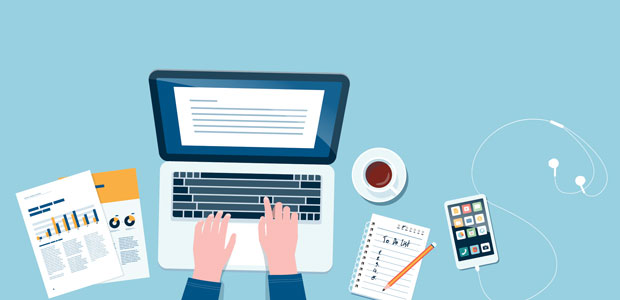
How to de-clutter your virtual space to improve productivity
In the COVID-19 era many people are taking the opportunity to organise and simplify their home working spaces, making good use of the ample time at home. But de-cluttering your virtual space - including your computer/laptop, phone, cloud storage, etc - is just as important as de-cluttering your physical space.
This is particularly important right now as there has been a huge swell in the use of connected digital devices and the internet due to the pandemic and lockdowns.
And the more we use virtual spaces - e.g. when working online from home, Zooming friends, shopping online etc - the more ‘virtual clutter’ we create.
This is bad news because virtual clutter distracts us, slows us down and makes us less productive.
As does having too many devices that we rarely use, meaning when we need something from our virtual space, we may have to hunt for across several devices.
So where do you start when it comes to de-cluttering your virtual space?
Here are some step-by-step tips you can follow to de-clutter virtual spaces and become more productive, focused, and calmer whilst working from home.
Gather all your electronic devices
The first step to sorting through and de-cluttering your virtual space is to focus on your hardware and gather all your devices into one place.
Check all the drawers and cupboards where you’re likely to have stored old devices and grab you mobile phones, laptops, tablets and digital cameras.
Make sure you pick up the charger, storage card and any accessories that go with each device. If you have old phone cases, game controllers or storage cases, collect those too.
Then lay everything out in one place such as your dining room table and group like items together so they are easy to see.
Determine what devices you currently use
Decide which devices you want to keep. If you can’t remember the last time you used a device, it’s probably time to get rid of it. Set aside the devices you no longer use or that may be damaged.
Check each device that you decide to keep and make sure that it is working properly. Make sure that each one has a functional charging cord and figure out what accessories or case goes with it.
Each item that you currently use should have a home, so make sure you have a clear place to store everything.
Also, designate a specific area as a charging station for items like your phone and tablet and keep the charging cords neatly stored in that area.
Organise your computer desktops
Now that you’ve started dealing with your hardware, you should turn your attention to software. Firstly, you should organise your computer desktops.
If your computer desktop is covered with documents and junk, it’s hard to find what you need, when you need it.
So delete any documents you don’t want, file away items you want to keep, and create files for anything that doesn’t already have a home.
Download Evernote (you can start with the free version) and drag files that you want to save but don’t want cluttering your desktop into Evernote’s desktop version where it doesn’t take up any space.
Empty your downloads folders
Next, go through your computers and tablets and delete any unneeded files, then empty the downloads folder on each device.
You may find many duplicate files in your downloads folder, as we often end up downloading files and documents more than once.
You can use a tool called Duplicate Files Fixer to find and delete duplicate files (photo, audio, etc.) that are often stored in the downloads folder.
As well as clearing space in your downloads folder, this should help your computer to run quicker by deleting bulky files (especially large files like videos and high resolution images) that eat up your computer’s memory.
Delete unwanted apps and programs
Go through the devices you use and delete any free apps or programmes that you never use.
Unwanted apps and programmes may slow you down and distract you from the task at hand, so don’t be afraid to delete them - you can download them in future if you need them again.
It’s much better to find a few apps that save you time and make you more productive, learn them thoroughly and stick with them.
Also, get rid of excess applications on your dock or taskbar so you only see the shortcuts you really need, based on what you use the most.
Decide what to do with the devices you don’t want
You might think that your devices that no longer work or that are damaged are not worth anything. But damaged devices can often be refurbished or used for parts.
A quick Google search will show you if there are any repair or recycle shops near you that take broken electronics.
A great option to look into after de-cluttering your electronics is to find an organisation that supplies used devices to people in need.
Mobile phones can be donated to a number of worthy causes including victims of domestic violence. Laptops can be donated to organisations that give to families in need.
Wipe your data after you de-clutter your devices
The final important step in de-cluttering your devices is to make sure that your information is cleared from the devices that you decide not to keep.
Any files or pictures should be backed up to an external hard drive or your cloud storage.
Once you have everything saved, be sure to erase your data and personal information to protect your privacy.
For example, for mobile phones, you should remove any applicable SIM card or memory card, erase all data and content in settings.
And for laptops and tablets you should restore the Operating System back to factory settings.
Ultimately, following the steps above to de-clutter your virtual space will help you become more focused, productive and calm.


